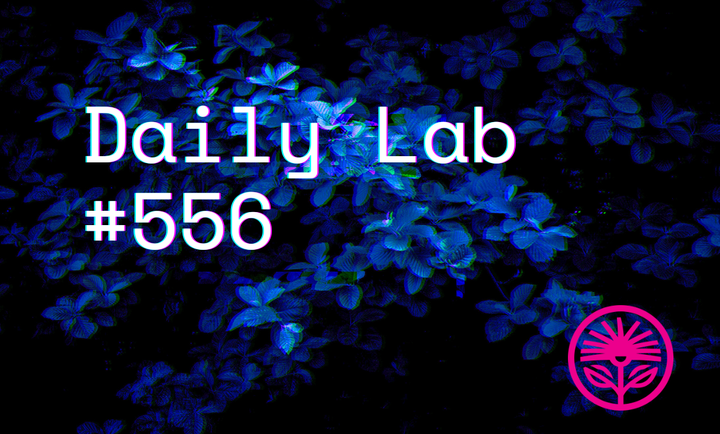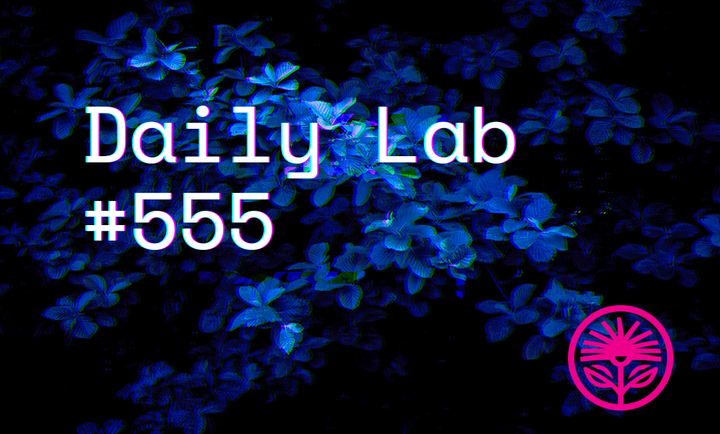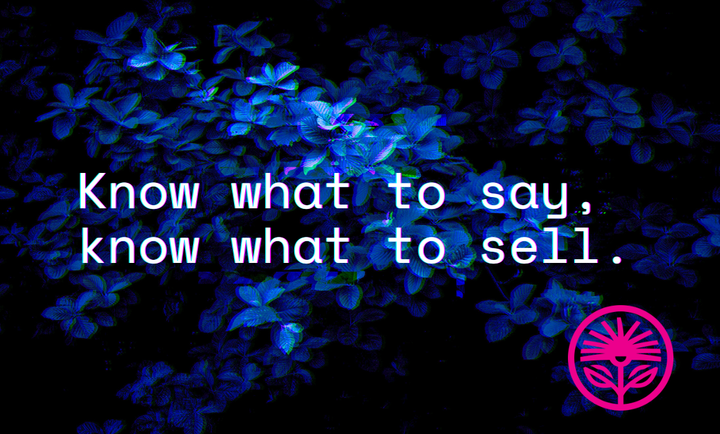I’ve changed something about this newsletter — Kelford Labs Weekly
I hope it helps you change, too.

I’ll get right to it: What I’ve changed is how I talk.
I use a lot more “I”s than I used to. A lot more, “I think,” and “I’m trying,” rather than “We must”, and “You should.”
And, yeah, it feels and sounds conceited to announce this change. Like, “Isn’t it great I’m talking about myself more?” as if that’s a selling point.
But I hope you’ll hear me out, because there’s something bigger happening.
WHAT
I’m considering this change leaning away from the “voice of authority” and leaning into the “voice of community.”
I’ve had a tendency to be what I self-critically call “finger-waggy.” I’ve caught myself in real life saying to friends, “Sorry, I said that as a declarative sentence. I really should have phrased it as a question...”
Now, I’d like to think that I wrote that way because I wanted to be direct and clear (I don’t want to become more vague or less useful). But the way I wrote it, to me at least, could have been more helpful by relating things a bit more specifically and personally.
So I’m trying to do a better job walking you through how I got to a principle, how an idea came about.
And the real and specific examples or experiences that led to it.
WHY
Because it’s the right time to change.
For one, the constant cacophony on LinkedIn these days is that nothing works. The “community,” such as it is, has bisected into “normal LinkedIn” and “weird LinkedIn,” as semi-competing camps try to figure out whether to please an algorithm or an audience (and neither is sure if one implies the other).
But what I’ve noticed seems to work a bit more often is what I consider “diary-style” updates. Just... saying what you’re doing, what you’ve done, what you plan to do. Plainly and personally.
People are, unsurprisingly, interested in getting a behind-the-scenes look at the lives and businesses of others.
This is just the current form in which that persistent preference is manifesting, and getting noticed.
That’s probably in part due to the deluge of AI content on LinkedIn and every other channel these days. If you’re reading something on the Internet, (or, within a few months, hearing or watching it), chances are pretty good that it wasn’t made by a human being (almost three quarters of new websites being created contain AI content).
So, if I want my newsletter to stay relevant, stay interesting, and stay helpful, it’s got to stay read. Which means I need to make sure I’m writing in a way that connects with people the way they want to be connected with.
And I think this style of content connecting with people is also due in part to seasons. A fundamental, bankable rule of humans is that we can get tired of anything.
Everything will eventually burn it itself out. Every trend ends.
“Voice from authority” used to work, now it works less well. So it goes.
But it’s not just that personal content “performs” better, it also works better. It’s one thing to tell someone the answer to a question, but it’s another to show them how and why it works.
A short diversion: In the world of AI “reasoning” models (ChatGPT’s o-series of models, DeepSeek’s R-series, and Claude’s “Extended Thinking” mode) there’s a concept called “reasoning traces.”
Basically, you get the model to output a ton of tokens (that decode to written words) before outputting its final response to the user. With these tokens, it “reasons” through the answer by following a chain-of-thought process. During a phase of post-training, the model might even be taught to output a phrase like, “wait,” which triggers it to double-check its work.
These reasoning traces serve two purposes:
1) They allow the model more time to come up with better solutions to problems
2) They allow the user and the AI lab to audit its “thinking” to identify errors, inconsistencies, or confusion
I think the same applies to mental models, too.
My process is detailed, organized, and visual. When I work on a framework like the Zero Plan, it’s created based on real-world experience and intense research.
But if you don’t actually see that, what faith could you have that it’s true?
And if I don’t engage publicly in the process, what opportunity do I have to better fit it to the market?
Steven Spielberg promotes his movies, according to the late Roger Ebert, by being “engaged in the process of understanding how his new movie came to be.”
That doesn’t just make his movies sell more, it makes his movies better. So why wouldn’t I try to improve in the same way?
But one of the biggest reasons to change is actually super simple: My favourite thing is when readers reach out with a question about a newsletter, a concept, or a specific marketing challenge. This week I’ve got two calls on the books with newsletter subscribers and they’re what I’m most looking forward to.
So I’m hoping that by connecting more directly in writing, asynchronously, more readers will be more interested in (or more comfortable with) replying and reaching out.
Basically, if I say “I” more often, I’m hoping you will, too.
HOW
Yeah, yeah. But how, right?
Well, as you might have seen in a few recent newsletters (especially the Dailies), they’re more personal, more reflective, more behind-the-scenes.
Instead of saying “This is what I came up with,” I’m trying to do a bit more, “Here’s what I’m thinking about.” Or, at the very least, “Here’s what I was thinking about when I came up with this.”
Luckily, adapting and adopting different writing styles was a pre-existing skill. As a copywriter, you’ve got to be able to change up your voice on the fly.
But, I’m still cheating a little bit with it.
One, I’ve been using JoelPT to help remind myself of my own principles and the principles I’ve learned from others. In changing the form I don’t want to break the function, so I’ve been running my outlines through it to confirm I haven’t missed easy opportunities or made a classic mistake.
(If you want access to try it out yourself, just reply to this email)
Two, I created a prompt (and uploaded it to a Claude Project) to double check my writing to make sure I’m not accidentally drifting into “Expert Mode” or forgetting to give the personal detail or the “reasoning traces.”
It told me to edit the whole section on “reasoning traces,” for instance, to make it more personal and less “Expert.” But I didn’t so I would be able to write this sentence, now.
Oh, and it’s also specifically prompted to make sure it doesn’t provide its own writing examples or phrasing, so I don’t accidentally infect my vocabulary with AI-isms (“Here’s the kicker,” “A isn’t just B—It’s C,” etc.) .
(If you want that prompt to try it out yourself, just reply to this email)
AND?
Is it working?
Well, it’s new, so I’m not certain of anything yet. But what I’m seeing so far is that engagement is up over 200% on LinkedIn over the past few weeks (where I’ve also made this style change), which is not going to blow anyone’s mind, but it’s not a bad start.
On the newsletter, nobody’s (yet) complained and there hasn’t been an increase in unsubscribes (he says, famous-last-wordsly), which I’m taking as a win.
But, honestly, the biggest change is how much more fun I’m having. I’ve been more eager, more energized, to do my daily reading and writing.
And because it’s fun, it’s easier to invest more energy, effort, and enthusiasm into it. That’s where motivation comes up, and that’s where habits come from.
(I hope that this gives you a bit of inspiration, or even courage, to make your own marketing more fun, so you’re more likely to get it done.)
I guess there’s no mystery behind why the Kelford Inc. logo is both a book and a flower.
We like learning and we love to grow and change.
This has been a really exciting and enjoyable change, something new to try and discover and learn from.
But, as I couldn’t possibly make more clear, I’d love to hear from you and hear what you think about it all.
Let me know what you’re working on, what you’re changing, what marketing challenges you’re facing. That’s the entire call-to-action for this week: Reply and let me know what you’re working on and what you think of this change.
Because changing seasons are things we all go through together.
So, to make my marketing more fun and more functional in the current season, I’m spending more time talking about why, what, and how I make marketing decisions.
And I hope that in doing so it’ll help you make your marketing decisions, too.
Take care, talk soon.
— Joel
Reply to this email to tell me what you think, or ask any questions!
Kelford Inc. shows experts the way to always knowing what to say.



